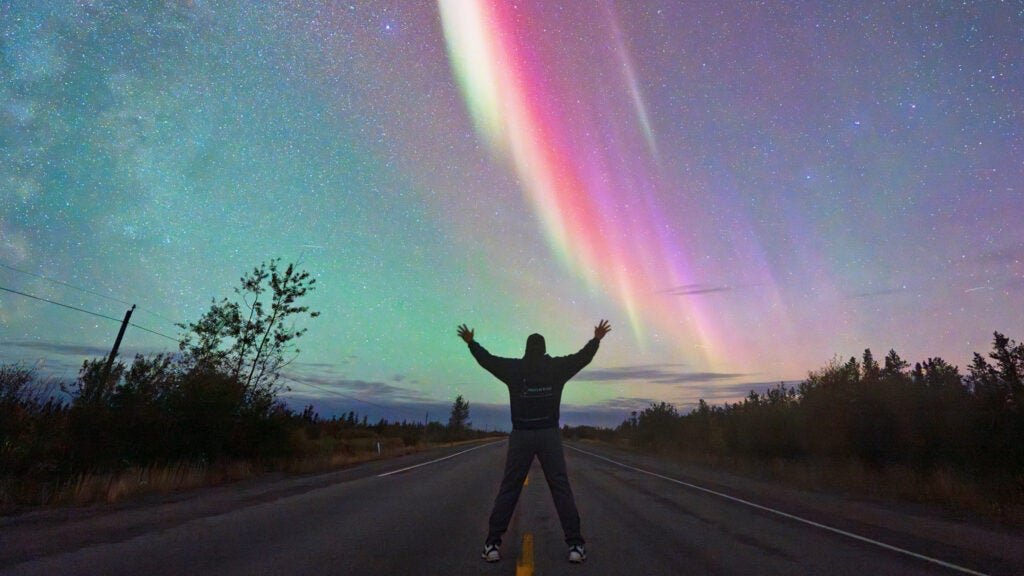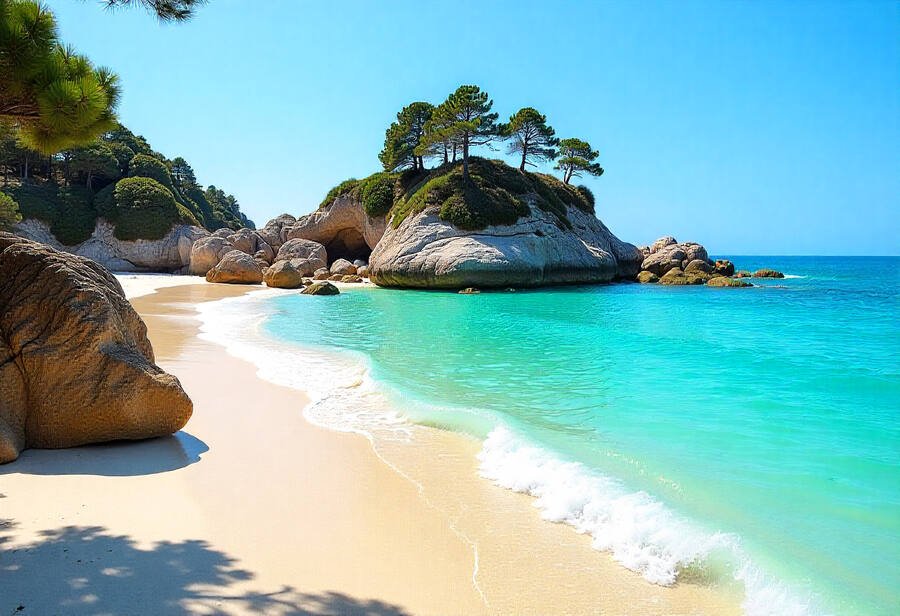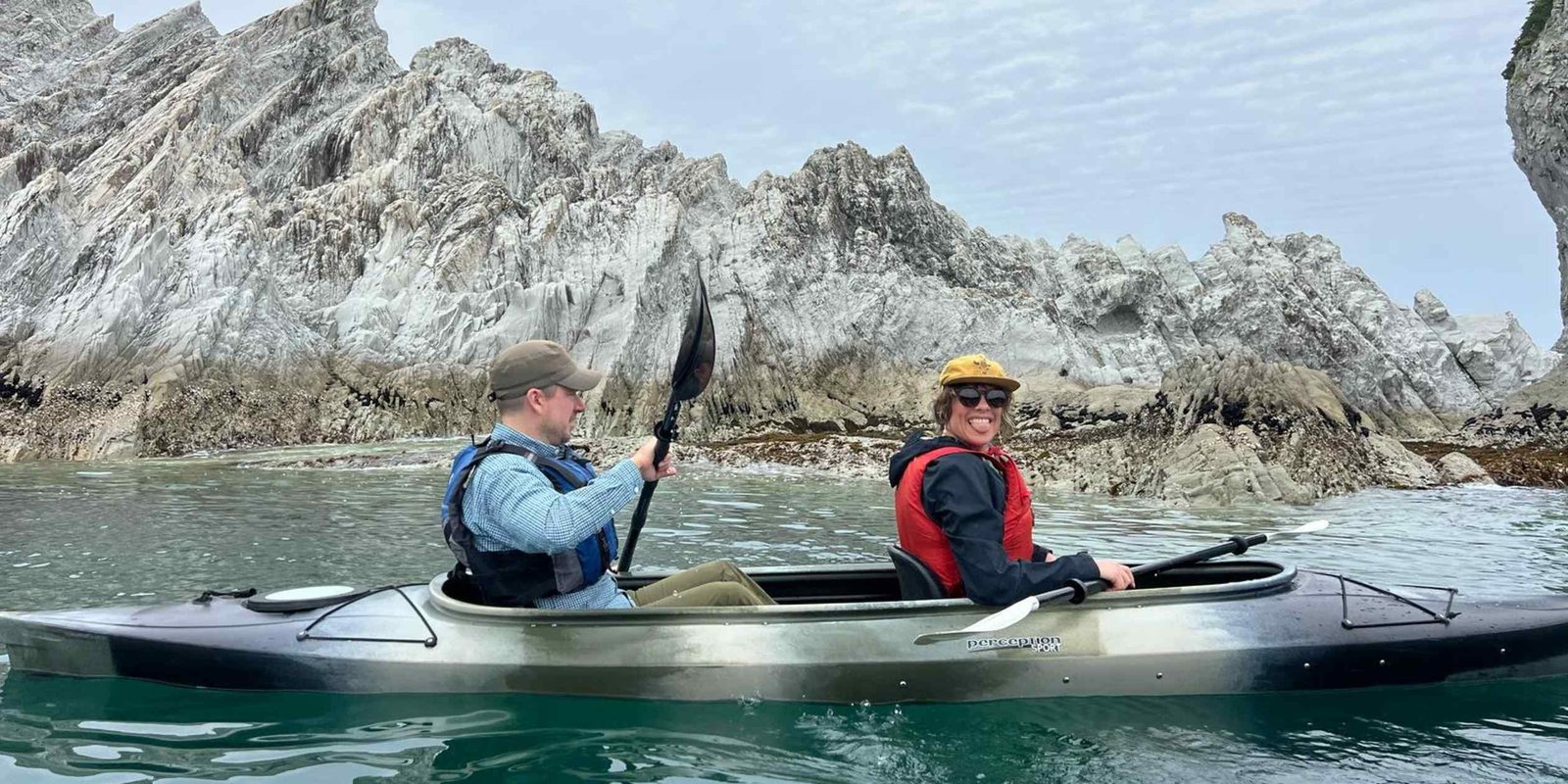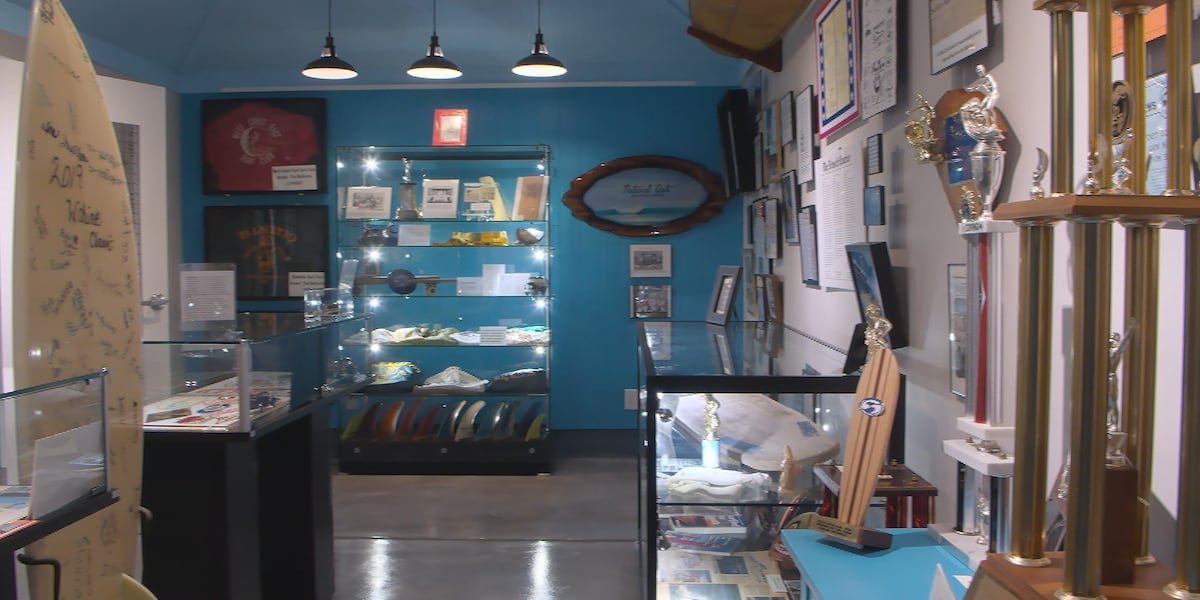SENDAI, Japan — The tourism sector in Japan’s northeastern Tohoku region is working to establish adventure travel, a type of experiential tourism that focuses on outdoor activities and cultural interaction. With a global market size for such tourism estimated at more than $400 billion, Tohoku expects adventure travel to play a key role in attracting overseas visitors.
Ways to Travel
I Chased the Northern Lights in Canada with Joe Buffalo Child

Joe Buffalo Child’s Best Tips for Northern-Lights Hunting
Most of us didn’t grow up under the northern lights or in a location where they are prevalent, but aurora activity has spiked in the lower 48 this year, and more opportunities to see them are on the horizon. This is a result of solar maximum, a roughly 11-year peak in activity that’s now underway and expected to last through at least mid-2025.
I asked Buffalo Child how to successfully catch the show. Read on for his expert advice.
Head to Dark-Sky Destinations at High Latitudes
During solar maximum, your odds of catching the spectacle in lower latitudes like Michigan’s Upper Peninsula are improved, but you still need relatively strong storm activity to see them. In high-latitude locales like Yellowknife, or Fairbanks, Alaska, the northern lights should be active most nights. “In 2022, we saw auroras every night for six weeks,” says Buffalo Child.
When deciding between destinations, take weather into consideration. For example, Yellowknife is inland and tends to experience less cloud cover than Iceland—also favored by lights hunters—which has a moodier coastal climate.
Not sure where to head? I recently wrote about the best places to see the northern lights around the world, including the places that were most successful for me.
Use the Right Data
Pull up an aurora-chasing app and you’ll inevitably see a Kp rating, which predicts geomagnetic activity on a zero to nine scale (the higher, the better). According to Buffalo Child, “Kp doesn’t matter.” It’s rarely an accurate real-time measure of whether you’ll actually see the lights, especially at high latitudes, he told me.
Instead, Buffalo Child suggests downloading the SpaceWeatherLive app to track the speed and density of the solar wind, which carries charged particles from the sun to earth; as speed and density increase, the likelihood of a prominent display does too.
Buffalo Child also suggests learning to read cloud forecasts to understand timing and movement of the clouds; my go-to app for this is Windy.
Visit a Northern-Lights Destination in the Right Season
At high latitudes, you can’t see the northern lights during the summer, due to the midnight sun. Buffalo Child says that Yellowknife usually has minimal cloud cover in September, August, March, and April—in that order.
In general, the best seasons for viewing the northern lights are fall through winter, usually September through late March. But reach out to a local tourism bureau for the most accurate information for that area.
Tour with a Local Company
That said, it’s always better to tap a local expert—especially someone like Buffalo Child who can predict cloud movements without technology.
“Connect, engage, and consult with a local—ideally an Indigenous company,” Buffalo Child says. There are countless reasons, but here are three big ones: local guides are well-versed in the roadways, in wildlife risks, and in regional weather patterns.
Plus, supporting Indigenous guides helps people like Buffalo Child keep valuable traditions alive. “With residential schools, we lost a lot of our skills, and we need to try to get those back,” he says. Tourism is an important avenue. “This is our land,” he told me, “and through tourism, I show people that we can be ourselves and make a living.”
North Star Adventures’ general aurora-hunting tours with a local Indigenous guide and large groups start at $107. Buffalo Child, however, only leads small group tours, which start at $143. If you’re looking for a multi-night adventure, book a fall package (from $633) for three nights of guided aurora hunting, plus a sightseeing tour of Yellowknife and Indigenous storytelling at the Prince of Wales Northern Heritage Centre. Accommodations are not included. I like the centrally located Explorer Hotel Yellowknife (from $256 at Booking.com).
Adventure and astrotourism writer Stephanie Vermillion has chased the lights around the world for years, from waterfalls in Iceland to remote sheep farms in Greenland. Her book 100 Nights of a Lifetime: The World’s Ultimate Adventures After Dark is out December 3.
Looking for more great travel intel? Sign up for Outside’s Destinations newsletter. Or for more inspirational features like these, sign up for the Long Reads newsletter.
Ways to Travel
Spain, Portugal, Stunning Hidden Beach Escape Ideal For An October Holiday, Offering Golden Sands, Crystal-clear Waters, And Peaceful Surroundings Away From The Crowds

Published on
August 10, 2025 |
Spain and Portugal reveal a stunning hidden beach escape perfect for an October holiday, where golden sands meet crystal-clear waters in tranquil surroundings. This peaceful retreat offers travelers a rare chance to unwind away from bustling crowds, taking full advantage of milder autumn weather and fewer tourists, making it an ideal destination to recharge and enjoy natural beauty in serene isolation.
As summer gives way to cooler days and shorter evenings, many travellers still yearn for that final burst of sunshine before winter sets in. Autumn can be the perfect time to take that last-minute getaway, especially for those looking to escape the crowded beaches and inflated prices of peak season. With the summer rush over, the Mediterranean coastline takes on a calmer charm, the weather remains warm, and holiday packages often drop significantly in price.
For those who can wait until October, the rewards are plentiful. Across southern Europe, popular holiday spots like Spain and Portugal reveal their quieter, more authentic sides. Among these destinations, the island of Ibiza stands out — not just for its famous nightlife, but also for the tranquil corners that come to life when the party crowds thin. Cala Benirràs, a secluded beach on Ibiza’s northern coast, is one such treasure.
A Beach Chosen for Its Space and Serenity
Wizz Air conducted an extensive study of more than 50 European countries to identify the continent’s best off-the-beaten-track beaches for the shoulder season. Their research looked at factors such as visitor numbers, daylight hours, and average temperatures between September and November. One of the key criteria was “beach space per visitor” — a measure of how much room each person has to relax without feeling crowded. Cala Benirràs ranked among the top choices, offering plenty of space for sunseekers to enjoy the last rays of the year.
A Different Side to Ibiza
While Ibiza is globally known for its energetic clubs and lively nightlife, Cala Benirràs showcases the island’s more laid-back personality. Located on the northwest coast, this peaceful cove is surrounded by hills and cliffs that add to its sense of seclusion. Visitors reach it via a scenic path that winds through the countryside, making the journey part of the experience.
From the beach, the view is dominated by Cap Bernat — a striking rock formation that juts out of the sea and is known locally as “the finger of God.” Its silhouette at sunset creates one of the most memorable scenes in the Balearics.
A Haven for Snorkelling and Market Browsing
The beach’s clear waters make it ideal for snorkelling, with visibility that allows swimmers to spot vibrant marine life close to the shore. On most days, except Wednesdays and Thursdays, a small hippy market sets up nearby, selling handmade crafts, jewellery, and local goods. The market adds a colourful touch to the otherwise quiet surroundings, creating a blend of nature and culture that feels distinctly Ibizan.
The Sunset Drumming Tradition
One of Cala Benirràs’ most distinctive features is its evening drumming circle. As the sun begins its slow descent, groups of locals and visitors gather on the sand, forming a circle and filling the air with rhythmic beats. The sound carries across the cove, mixing with the sound of the waves and creating a hypnotic atmosphere.
This is not a staged performance but a spontaneous ritual that has become part of the beach’s identity. It channels the island’s bohemian spirit and offers a moment of connection between people from all walks of life. In summer, the drumming draws large crowds, but during autumn it becomes a more intimate gathering where the music feels personal and the surroundings less hectic.
Perfect Weather for a Shoulder-Season Escape
October and November bring pleasantly warm days to Ibiza, with average temperatures hovering around 23°C (73°F). This climate is perfect for beachgoers who prefer milder heat and for those who want to spend time outdoors without the intensity of summer’s sun. The sea remains warm enough for swimming, and the island’s natural landscapes are still vibrant from the summer months.
Easy Access and Plenty of Amenities
Despite its secluded feel, Cala Benirràs is easy to reach. It lies just a short bus ride from the nearby town of Port de San Miguel, which offers a range of accommodation options, from boutique hotels to private villas. Visitors will also find restaurants, cafés, and shops close by, ensuring that comfort is never far from the shore.
Why Cala Benirràs Shines in Autumn
Autumn transforms Cala Benirràs into something truly special. The lack of summer crowds gives the beach a more relaxed pace, allowing visitors to take in the scenery without distraction. The sunsets are striking, the drumming circles more soulful, and the air carries a gentle warmth that feels restorative.
Those who make the trip in October or November find themselves immersed in a setting where nature, culture, and tranquillity merge seamlessly. The hills that frame the beach glow in the evening light, the sea shimmers with late-season sunshine, and the sounds of percussion echo long after the sun has disappeared.
An Invitation to Discover a Hidden Gem
For travellers seeking an experience beyond the typical holiday itinerary, Cala Benirràs offers a rare balance of beauty, culture, and calm. It is a place where you can snorkel in clear waters during the day, wander through a small artisan market in the afternoon, and end the day watching the sun melt into the horizon to the beat of live drums.
This beach embodies the idea of Ibiza as more than just a party island. It shows a side of the Balearics where relaxation, tradition, and natural wonder take centre stage. With easy access, comfortable autumn weather, and a charm that lingers in memory, Cala Benirràs stands as one of Europe’s most appealing late-season escapes.
Spain and Portugal offer a stunning hidden beach escape ideal for an October holiday, featuring golden sands and crystal-clear waters. With peaceful surroundings and fewer crowds, this retreat lets travelers enjoy mild autumn weather in serene isolation.
Whether you’re looking to extend your summer, capture the last warmth of the year, or simply explore a quieter side of a famous destination, Cala Benirràs delivers all of it — wrapped in golden sunsets and the gentle rhythm of the Mediterranean.
Ways to Travel
Northeastern Japan pushes adventure travel for global tourists

Efforts center on creating experiences that engage with nature and culture
Japan’s Tohoku region is working to offer more trekking, paddling and other adventure travel activities. (Tohoku Tourism Promotion Organization)
HAYATO SAWA
August 10, 2025 09:00 JST
Ways to Travel
Folly Beach breaks ground on new history museum

FOLLY BEACH, S.C. (WCSC) – Folly Beach has opened a history museum that preserves the history, culture and heritage of the city and its community.
The museum broke ground with a grand opening and ribbon cutting ceremony on Saturday. The museum’s mission is to preserve Folly Beach’s history of war, pirates, surfing and tourism throughout the years. They have been planning to build the museum and collecting artifacts and memorabilia for the past 10 years.
The city of Folly Beach first announced it would build a history museum last year.
Regina Anderson, chairman of the Folly Beach Historical Society, says she hopes residents and tourists will use the museum to learn more about the area’s history.
“It’s not just a vacation spot and even for the residents, it’s not just their memories,” Anderson said. “Every generation has different memories of how special Folly Beach is and I think it’s important to understand how other people see history and how they experience the same place.”
The first display at the museum is “Surfing on the Edge,” which explores the origins of surf culture on Folly Beach from the early 1960s to the current charitable organizations that have grown out of that culture.
Richard Beck, former mayor of Folly Beach and board member of the Folly Beach Historical Society, says surfing is part of Folly’s character.
“You can’t separate surfing from the character of Folly Beach,” Beck said. “There are hundreds of people that are surfing and have stories to tell, so we hope to be able to include as many as would like to have their stories included.”
Future exhibits include the city’s role in the American Revolution, the Civil War and World War II; the history of the Folly Beach pier; the impact of hurricanes on Folly Beach; and the area’s history with pirates and criminals.
“The idea of rotating exhibits is cool because the people who are volunteering and providing things for this exhibit are very different from the ones that’ll be in the next one,” Anderson said.
Dozens attended the grand opening that featured three panel discussions, including one on the pioneers of surfing on Folly and the Southeast Coast, another on the story of the 1976 civil rights lawsuit against the City of Folly Beach, which had restricted surfing to the Washout and another on all the organizations grown from surf culture.
The panel on surfing on Folly Beach featured four panelists who have been surfing in the area since they were little: Foster Folsum, Nanci Polk-Weckhorst, Dewey Mauldin and Jack Tripp.
They all shared stories about surfing the waves when many didn’t think you could surf them. When they first began surfing, there weren’t even leashes attached to the board to help capture the board after a wave. They watched the area grow in surf culture with surf shops and meetups to surf in groups.
Nanci Polk-Weckhorst told the audience how she used her mother’s ironing board when she began surfing.
“We used to steal it out of the beach house and my father would push me in the waves and it didn’t surf real well, but it was something to do,” Polk-Weckhorst said. “Then, finally, my brother and I went down and bought our own surfboards. That’s when I fell in love with it and never looked back.”
Polk-Weckhorst then went on to win surfing competitions, be inducted into the Surfing Hall of Fame and became one of the best surfers on the East Coast.
She says the historical society did an excellent job at telling the story of surf culture on Folly Beach.
The new museum is located at 55 Center Street in the community center and library building and is now one of the first things you see when you cross the bridge into Folly Beach.
Copyright 2025 WCSC. All rights reserved.
-

 Brand Stories3 weeks ago
Brand Stories3 weeks agoBloom Hotels: A Modern Vision of Hospitality Redefining Travel
-

 Brand Stories2 weeks ago
Brand Stories2 weeks agoCheQin.ai sets a new standard for hotel booking with its AI capabilities: empowering travellers to bargain, choose the best, and book with clarity.
-

 Destinations & Things To Do3 weeks ago
Destinations & Things To Do3 weeks agoUntouched Destinations: Stunning Hidden Gems You Must Visit
-

 Destinations & Things To Do2 weeks ago
Destinations & Things To Do2 weeks agoThis Hidden Beach in India Glows at Night-But Only in One Secret Season
-

 AI in Travel3 weeks ago
AI in Travel3 weeks agoAI Travel Revolution: Must-Have Guide to the Best Experience
-

 Brand Stories1 month ago
Brand Stories1 month agoVoice AI Startup ElevenLabs Plans to Add Hubs Around the World
-

 Brand Stories1 month ago
Brand Stories1 month agoHow Elon Musk’s rogue Grok chatbot became a cautionary AI tale
-

 Brand Stories3 weeks ago
Brand Stories3 weeks agoContactless Hospitality: Why Remote Management Technology Is Key to Seamless Guest Experiences
-

 Asia Travel Pulse1 month ago
Asia Travel Pulse1 month agoLooking For Adventure In Asia? Here Are 7 Epic Destinations You Need To Experience At Least Once – Zee News
-

 Brand Stories1 month ago
Brand Stories1 month agoChatGPT — the last of the great romantics












